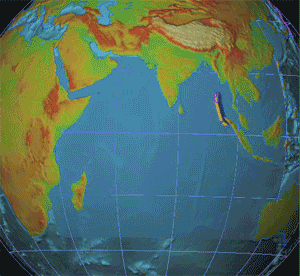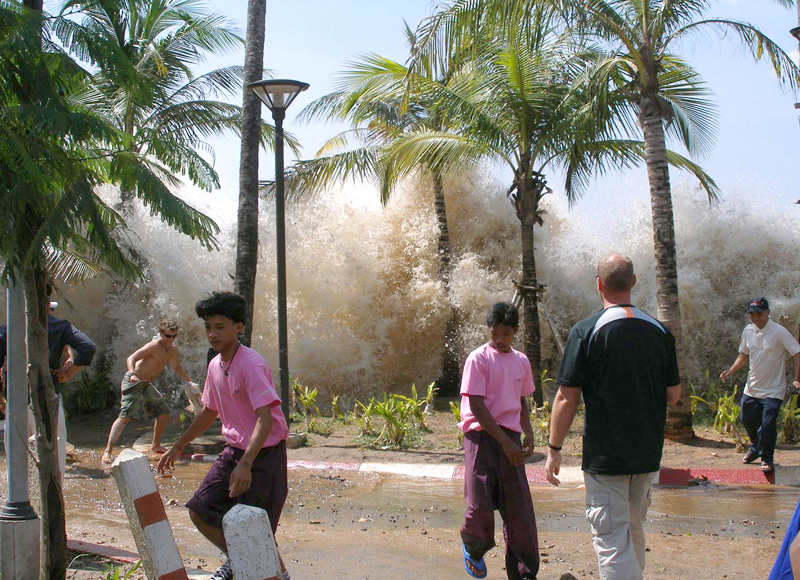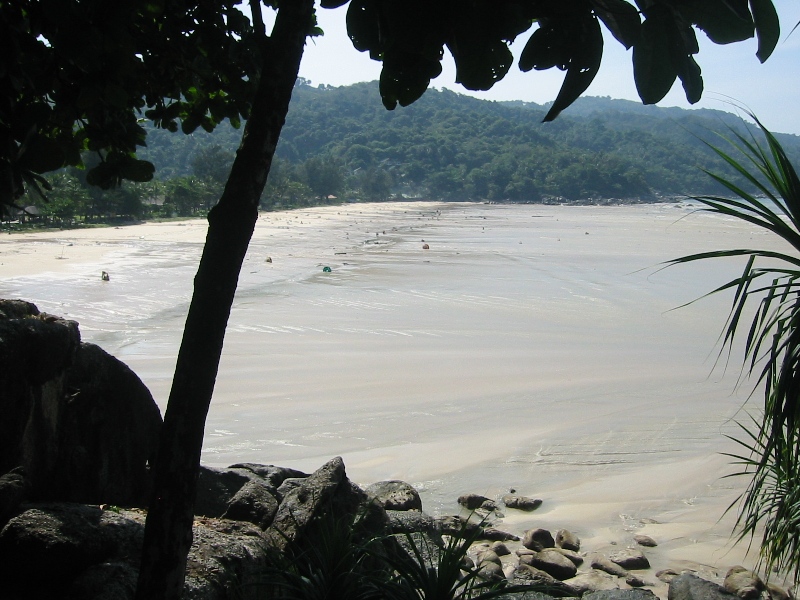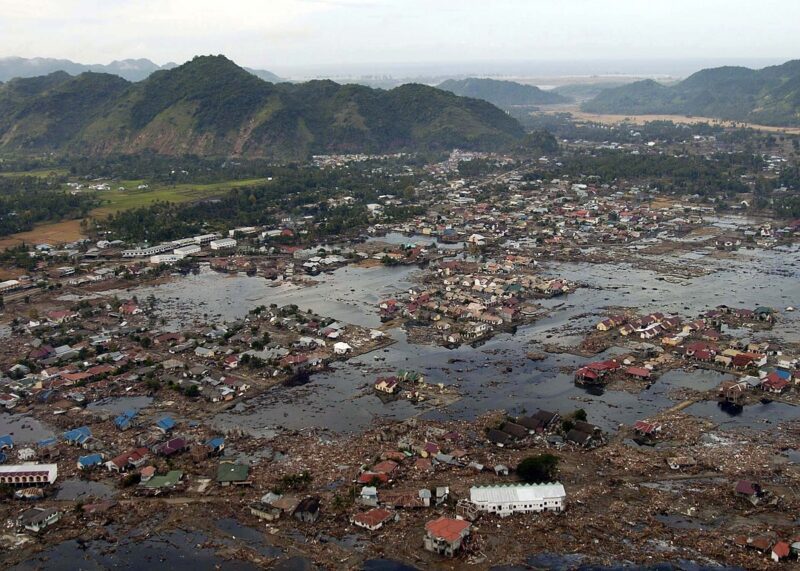20-year anniversary of the Boxing Day tsunami
It was 20 years ago, on December 26, 2004, that the Boxing Day tsunami in the Indian Ocean became one of the deadliest natural disasters in history. The powerful waves claimed the lives of more than 220,000 people. A 9.1-magnitude earthquake off the coast of Sumatra, Indonesia, sent tsunami waves surging across the Indian Ocean at speeds of up to 500 miles per hour. And waves from the tsunami reached up to 100 feet (30 m) in height.
The earthquake that struck that morning was the third-largest earthquake since modern seismography began in 1900. It was the result of a more than 700-mile rupture on the fault line that separates the Burma plate from the Indian plate. In some places, the seafloor lifted up by 4 to 5 meters.
NASA said the earthquake:
… decreased the length of day, slightly changed the planet’s shape and shifted the North Pole by centimeters. The earthquake that created the huge tsunami also changed the Earth’s rotation.

Images from the Boxing Day tsunami

What is a tsunami?
So, what exactly is a tsunami? According to NOAA:
A tsunami is one of the most powerful and destructive natural forces. It is a series of extremely long waves (multiple waves tens-to-hundreds of miles between crests) caused by a large and sudden displacement of the ocean. Tsunamis radiate outward in all directions from the point of origin and can move across entire ocean basins. When they reach the coast, they can cause dangerous coastal flooding and powerful currents that can last for several hours or days.
The term “tsunami” originates from Japanese, with “tsu” meaning harbor and “nami” meaning wave. These waves can be triggered by earthquakes, volcanic eruptions, landslides and more. Tsunamis are not caused by the moon or related to tides, so it’s incorrect to call them tidal waves.
Tsunamis on the deep ocean
The distance between waves in a deep-ocean tsunami can be hundreds of miles. But the wave height on the ocean may only be a few feet. It’s not until the waves reach shallow waters near shore that the wavelengths shorten but grow in height. According to NOAA, these destructive waves can reach more than a mile inland.
So, the energy these ocean tsunamis carry is immense. But tsunamis don’t always look like a towering wave approaching. In fact, tsunamis first draw water away from shore, before the water comes back in. And then it might look like a fast-moving flood or wall of water.

What to do if there’s a tsunami warning
Tsunami warning systems rely on earthquake data, ocean buoys and tide gauges. If you are in an area where a potential tsunami could strike when a warning is issued, heed the information relayed through sirens, text messages and emergency broadcasts.
The advice is mostly common sense, but sometimes people don’t act rationally in an emergency. Stay away from beaches, move inland and find higher ground. Follow the directions of officials and evacuation route signs. Be alert for damage from any related earthquake, such as downed power lines. Continue to keep updated on the situation with your mobile device.
Bottom line: The 20th anniversary of the Boxing Day tsunami in the Indian Ocean is on December 26, 2024. The tsunami – and associated earthquake – was one of the deadliest natural disasters in recorded history.
Read more: Landslide-triggered tsunamis becoming more common
Read more: Earlier tsunami warnings via magnetic fields
Read our previous article: Io’s raging volcanoes are self-powered

Thanks for sharing. I read many of your blog posts, cool, your blog is very good.